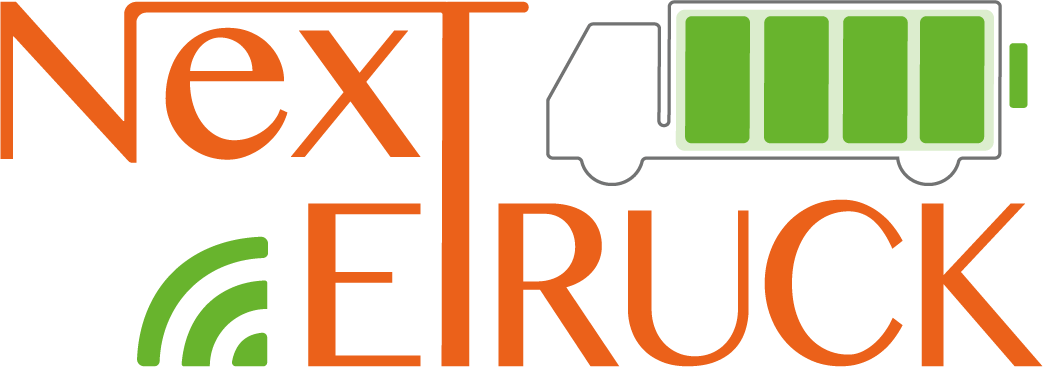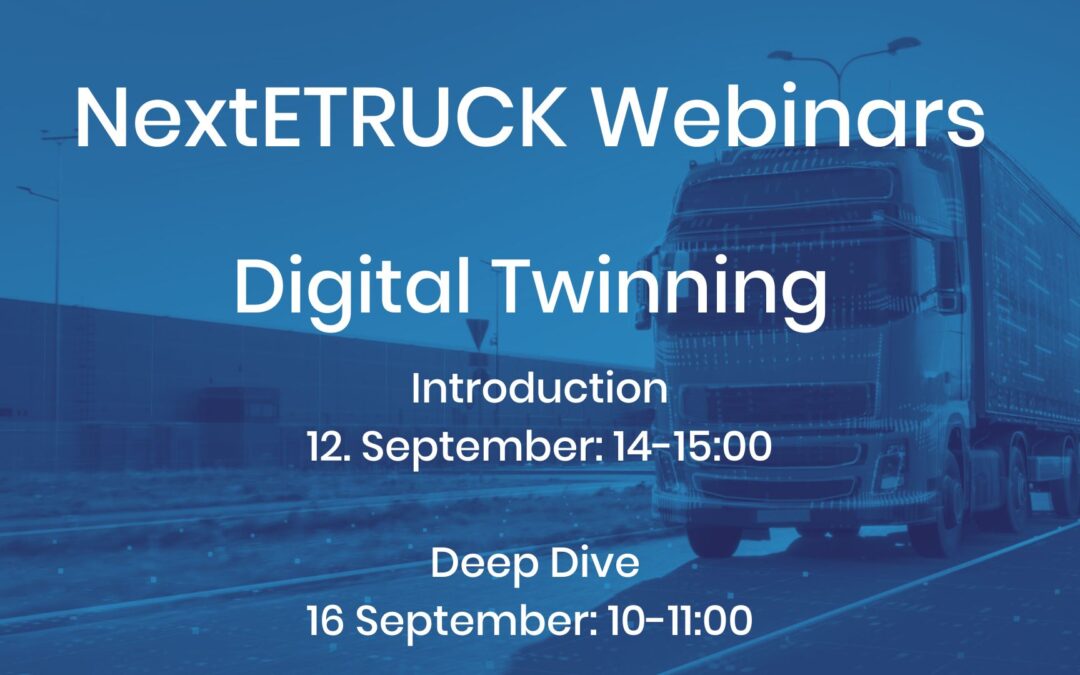NextETRUCK presented its progress on digital twinning as part of two webinars on 12 and 16 September 2024. The first webinar gave a broader insight into the concept in general and the NextETRUCK use cases, the second part included a deep dive into the topic and a live demonstration of the tools.
The webinar, which was attended by more than 20 stakeholders and was co-organised by AVL/AT (Leo Xenakis) and POLIS Network (Niklas Schmalholz), also included an overview of the NextETRUCK project itself.
You can find the recordings embedded at the bottom of this article.
What is digital twinning?
A digital twin is a virtual representation of an object, in the case of NextETRUCK an electric HDV, which is kept up to date with data from a physical object. These models can then be used for a wide range of applications, many of which are covered in the Webinars. The use cases can be split into two broad categories, those covered by the fast running (1000x real-time), and those executing at closer to real-time.
Fast executing digital twins are generally used to perform forward predictions for the remainder of the current cycle or for a future, yet to be started cycle, and can be used for applications including fleet management and optimised control strategies. Slower executing DTs have more accuracy and are generally used for validation and problem identification, useful for software validation, or preventative maintenance respectively, for example.
On this project there are many digital twins, two of which are covered in the webinar, for optimised thermal control, and energy consumption prediction. Challenges faced regarding the secure bidirectional communication required, are also covered.
Why is it relevant for NextETRUCK?
Both use-cases are important for NextETRUCK. The simulation of the testing scenarios helps to ‘virtually’ alter the vehicle components, for example by changing the battery size without tweaking the actual vehicle. The assessment of the real-world driving tests helps to identify usage patterns, vehicle wear and tear, as well as predicting and simulating the total cost of ownership.
Ultimately, the individualized DT models of all vehicles in a fleet, together with the various fleet management algorithms will enable optimization of the whole fleet, to maximise efficiencies and thus, reduce total cost of ownership.
Would you like to learn more about the technical aspects of NextETRUCK? Join our next webinar on megawatt charging on 28 October by registering here.

